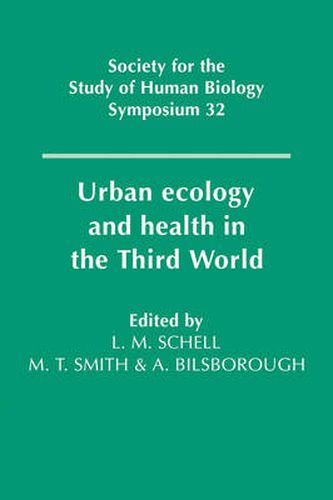Readings Newsletter
Become a Readings Member to make your shopping experience even easier.
Sign in or sign up for free!
You’re not far away from qualifying for FREE standard shipping within Australia
You’ve qualified for FREE standard shipping within Australia
The cart is loading…






This volume looks at the relationship between specific aspects of Third World cities and human health. Rapid and extensive urbanisation of the less developed nations is perhaps the most dramatic demographic phenomenon of our times, but its impact on human biology is not well understood. Here, a cross-section of work is presented on this subject allowing human biologists, urban planners, public health workers, and other specialists to assess our knowledge and the current approaches available to increase it. Contributions fall into two groups: studies of urban ecology including the social, economic and physical domains, and studies of biological responses to the urban environment. Health is not merely the absence of specific diseases, but is construed more broadly to include a wide range of biological parameters that are correlated with various states of suboptimal health. These include patterns of child growth and development, frequencies of specific diseases, nutritional status, immunological characteristics and physiological parameters. This important volume will be of interest to a wide range of researchers and academics, including human biologists, anthropologists, healthcare professionals, human geographers, urban and regional planners, and economists.
$9.00 standard shipping within Australia
FREE standard shipping within Australia for orders over $100.00
Express & International shipping calculated at checkout
This volume looks at the relationship between specific aspects of Third World cities and human health. Rapid and extensive urbanisation of the less developed nations is perhaps the most dramatic demographic phenomenon of our times, but its impact on human biology is not well understood. Here, a cross-section of work is presented on this subject allowing human biologists, urban planners, public health workers, and other specialists to assess our knowledge and the current approaches available to increase it. Contributions fall into two groups: studies of urban ecology including the social, economic and physical domains, and studies of biological responses to the urban environment. Health is not merely the absence of specific diseases, but is construed more broadly to include a wide range of biological parameters that are correlated with various states of suboptimal health. These include patterns of child growth and development, frequencies of specific diseases, nutritional status, immunological characteristics and physiological parameters. This important volume will be of interest to a wide range of researchers and academics, including human biologists, anthropologists, healthcare professionals, human geographers, urban and regional planners, and economists.